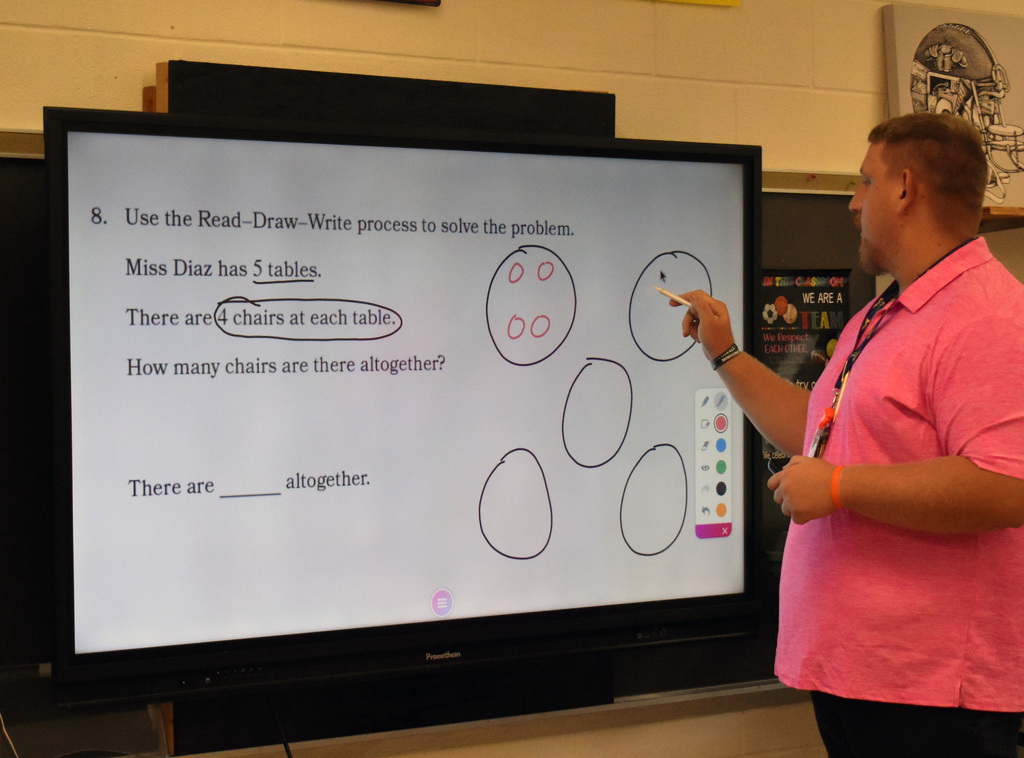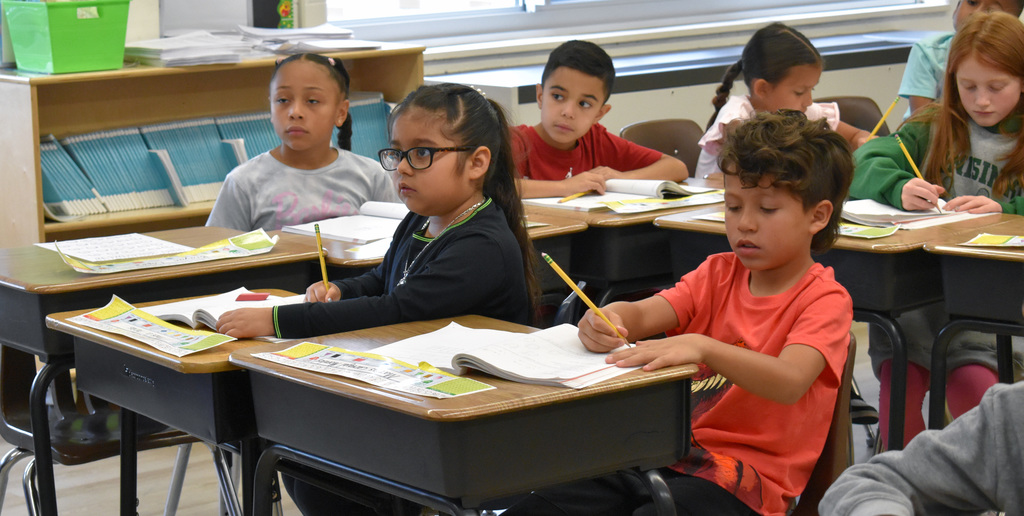Leyla Johnson’s ES K-2 physical education classes have been working on practicing locomotor movements, which involve moving the body through space from one location to another in different ways. Take a look!
Some locomotor movements include walking, skipping, galloping, sliding, running, jumping, leaping and hopping. Students have also been working on learning different pathways, which are the paths that people take as they move from one place to another A pathway can be “straight,” “curved,” “zigzag” or a combination of these.
As part of their physical education class, students get to take turns “following the leader” to music! They get to choose the locomotor movement and the pathway while the rest of the class follows along. Not only are they learning, they’re having a chance to be creative and silly!
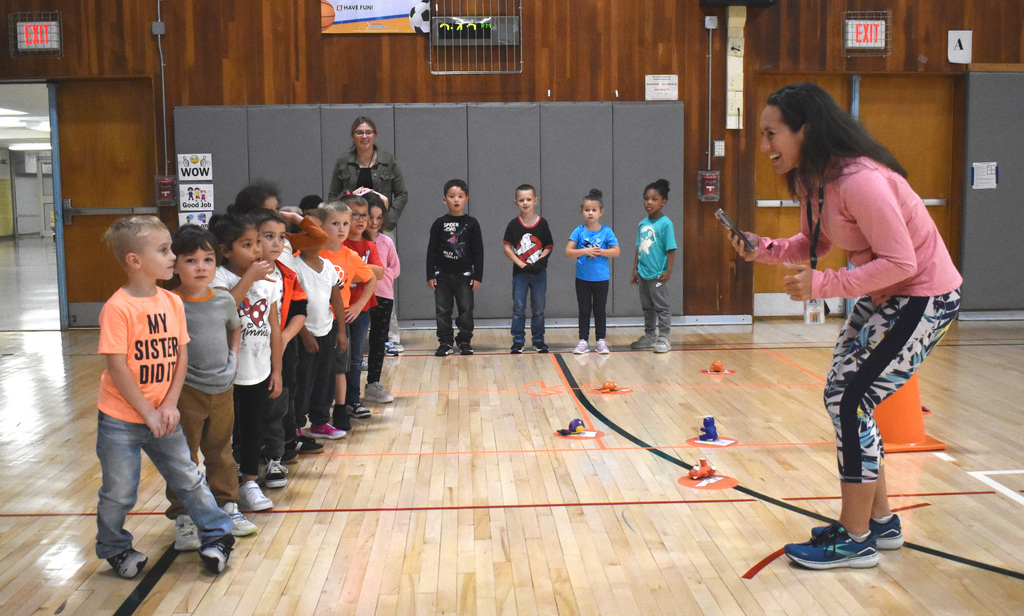
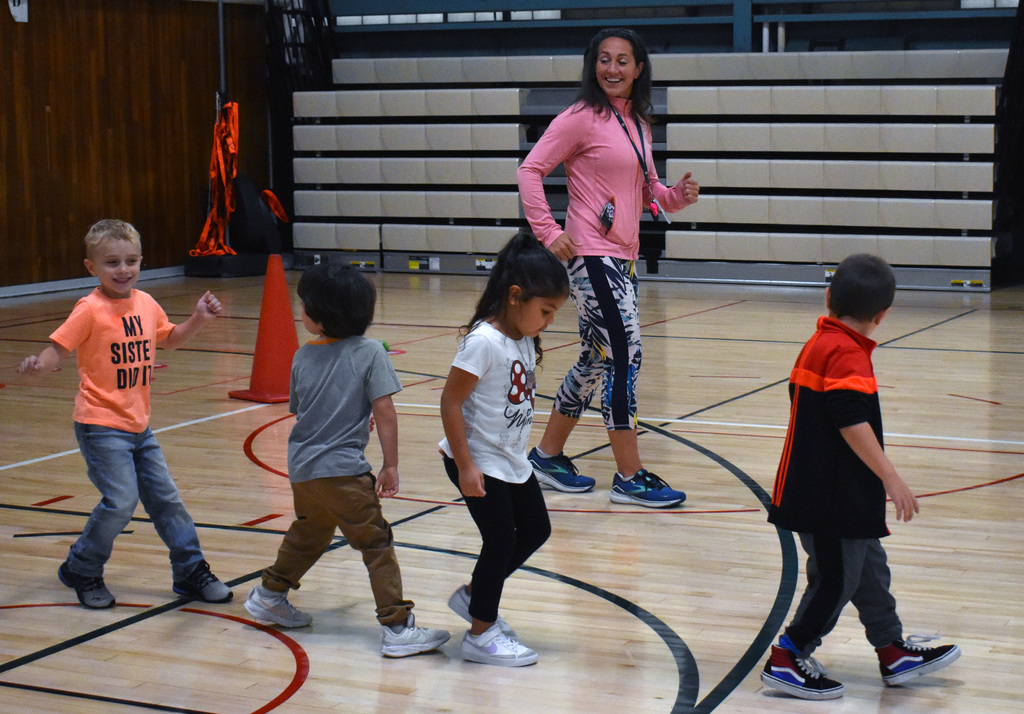

In-school instrument lessons are in full swing in all our buildings! They are important role in increasing skills and aptitude in the playing of a particular instrument. Take a peek these Intermediate School fifth-grade trombonists, who, under the guidance of band teacher Andrew Hulle, are using software called MusicFirst. Mr. Hulle uses this all-inclusive music platform with all instruments.
In this instance, students were working with the PracticeFirst tool. It allows students to play along with sheet music and the program listens to them and assigns them scores based on their performance. They are scored on pitch accuracy and rhythmic accuracy. The better they score the more stars they receive and students are holding a friendly competition to see who can collect the most stars!


JOIN US!

REMINDER: Breakfast and lunch are free to all students! These sixth-graders are ready to have a fresh, nutritious meal with their friends. Lighten your morning load and ask your student to take advantage of our varied dining options!


It’s a big deal when you can pick out a library book and check the book out of the library by yourself! Kindergarten students, like Mia McLean’s ES kindergarten library students,, recently had their first chance to do just this! Mrs. McLean reviewed the process for picking out a book and how to check out that book with her. Take a peek! Now, with every visit to the library, these little students will be taking a book home to read.


Join us!

Victoria Ingrassia’s eighth-grade FACS students have made delicious Focaccia bread, a type of flat Italian bread made with yeast and olive oil and flavored with herbs. Focaccia is one-half to one-inch thick with a light crust on the top and bottom. It's often described as "flatbread" or "Italian flat bread," but unlike the flat bread, it’s not isn't flat at all, but thick and fluffy.
Even more fun: Students took their recently learning kitchen cutting skills to cut up raw vegetables to create one-of-a-kind vegetable artwork on their breads! Take a look at their amazing creativity!




ES art teacher Ilana Kaufman is introducing her kindergarten students how to properly use a paint brush as part of their initial project work creating and coloring abstract lines using oil pastels and watercolor paint.
Ask your student how they know “if the paints are sleeping,” “how to wake up paint” and why they need to hold a paint brush as if it were a “ballerina on her toes!” They know what this means!


GOING GOLD! Thank you to everyone for bringing awareness to the need for more research dollars to fund research for cures to pediatric cancer. The district glowed in various shades of yellow and gold!
Visit our Facebook page to see photo galleries of our students, faculty and staff in their gold/yellow attire! https://www.facebook.com/MinisinkValleyCSD




Why does belly flopping into a pool hurt while diving gracefully pierce the surface?
The answer is cohesion... water molecules stick together! Carolyn Russell’s freshman Biology class began the year exploring the Scientific Method, hypothesizing which side of a penny would hold more water: Heads or tails? Students discovered the properties of cohesion allow water molecules to be attracted to one another allowing them to deliver an impressive 260 drops of water to the tails side of a penny.
Cohesion refers to the property of molecules of the same substance sticking together due to attractive forces between them, essentially meaning "the ability to stick to itself." This is primarily caused by the polarity of the molecules, where positive and negative charges within a molecule attract opposite charges on neighboring molecules, creating a bond like in water where hydrogen bonds are responsible for its strong cohesive properties.
When they added a surfactant, a substance that lowers the surface tension of water and limits cohesion, they observed those numbers drop dramatically. Some students were only able to deliver 13 or 14 drops of water after adding a surfactant. It was an impressive exploration into the properties of water and steps required to carry out the Scientific Method.

Tracey Salinardi's ES second-graders are learning about the metric system. They’re using tools such as meter sticks, centimeter rulers and centimeter cubes to measure different objects. Students are learning to choose appropriate tools according to the sizes of the objects. For instance, students measured the door with a meter stick but measured their markers with a centimeter ruler!
The metric system is a system of measurement that uses the meter, liter, and gram as base units of length (distance), capacity (volume), and weight (mass) respectively.

A beautiful and majestic bald eagle watched drop-off students arrive to the Intermediate School campus today! Bald eagles can be found in New York year-round, with large numbers often congregating in winter. In the 1970s, there were believed to be just two bald eagles left in the entire state of New York. Now, there are close to 1,000, and they're no longer considered endangered.

District fifth-graders, like Mike Conklin’s IS fifth-graders, are practicing how to round numbers in math. Rounding in fifth-grade math is important because it teaches students how to estimate answers quickly and accurately in real-life situations where exact precision isn't always necessary, making calculations simpler and helping them understand the relative size of numbers, especially when dealing with large numbers or complex problems. Rounding also serves as a valuable tool for students because it allows them to check and see if their final answer is reasonable


District sixth-graders were treated to a special assembly which ties into the work they’re doing in their science classes: Seeing how science is all around us as they continue to investigate, experiment with and observe how our universe works.
Pathology Manager Lisa Everle spoke to students on Sept. 25 about the field of clinical pathology and how a clinical pathology laboratory works!
A clinical pathology laboratory performs tests on bodily fluids, tissues and cells to help diagnose and/or monitor diseases. Laboratory specialty areas can include: Blood bank, clinical chemistry and biology, toxicology, hematology, immunology and serology and microbiology.


Reminder: We're GOING GOLD on Monday, Sept. 30! Please join our efforts to bring awareness of the need for new treatments and hopeful cures for pediatric cancer. Thank you to the High School's Youth Against Cancer Club for spearheading this initiative.
CALL FOR PHOTOS: Share photos of your student's gold/yellow attire! Email to communications@minisink.com to be included in a forthcoming photo gallery!

The High School’s Career Achievement Program (CAP) students provide weekly assistance to teachers and educators in various buildings throughout the Slate Hill campus. It’s a great inter-school collaboration! Students recently helped ES reading teacher Valerie Zubikowski prepare for her lesson by gathering, organizing and cutting letter sounds cards. Using these letter sound cards, students will be practicing being able to fluently say the sounds of letters to help build their phonics skills!
Letter sound cards are a tool used to help students learn the relationship between letters and the sounds they make. They can be used to help children learn to automatically associate letters with sounds; to review letters and sounds to help students become more fluent; support phonological awareness by helping students sound out letters and combinations of letters; and support spelling through the review spelling sounds!
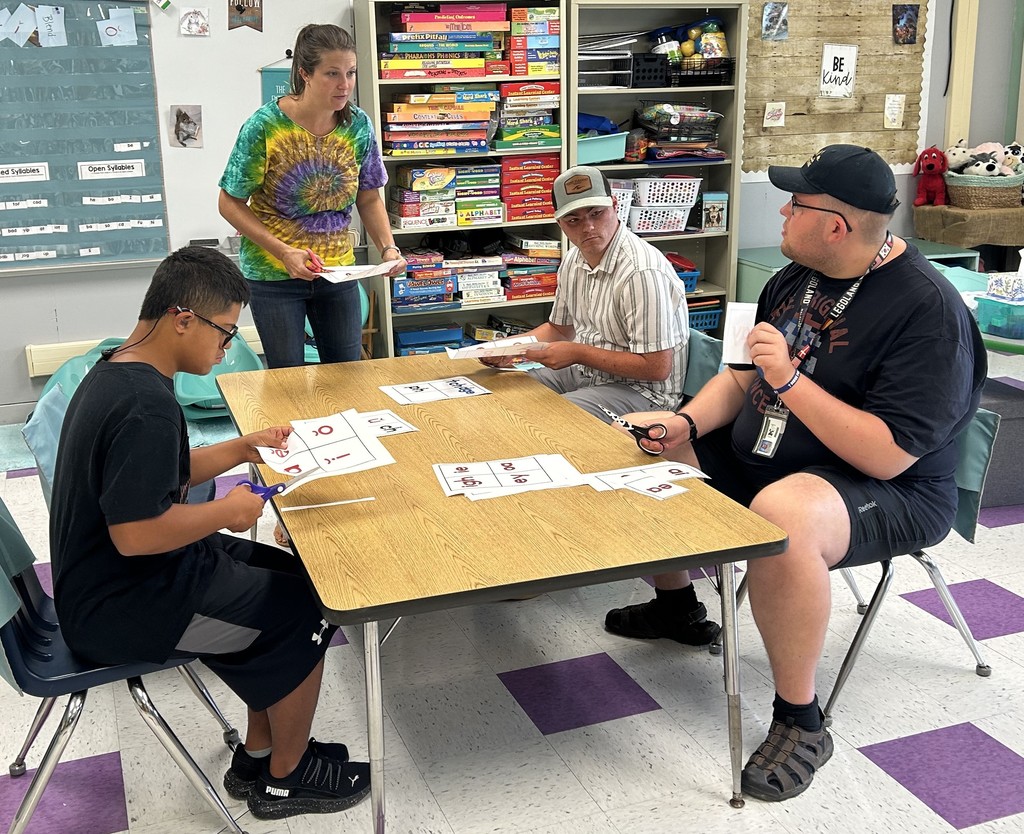

DON’T LET THIS TROPHY LEAVE THE DISTRICT!
We invite you to be part of the Orange County “Cool School Challenge! ” Join the team representing Minisink Valley and participating in the Nov. 9 Polar Bear Challenge at the Rez in Highland Mills! We want to retain our title as the “Cool School Challenge” winner!
The “Cool School Challenge” is a friendly competition between local schools as part of the 2024 Orange County Polar Plunge. Students, staff and community members are encouraged to create a team of “Plungers” to support the good work of Special Olympics New York. Because of your efforts, Minisink Valley won the 2023 Cool School Challenge, and we're proudly displaying this trophy in Central Office!
Director of PPS Jeff Finton is overseeing Minisink Valley’s efforts to create a team. Join Minisink Valley’s team by clicking on the QR code in this flyer or email Mr. Finton at jfinton@minisink.com If. If you know of community members, families or students or student clubs who’d like to represent Minisink Valley, please share this flyer.
We hope you can join our team!


Otisville Elementary Grades 3 to 5 families....Reminder: Tonight is your student's Open House! We look forward to seeing you there!
Please note times:
6 to 6:30 p.m.: Fifth-Grade
6:35 to 7:05 p.m.: Fourth- Grade
7:10 to 7:40 p.m.: Third Grade

Cheers to the Cross-Country boys freshman team, which took second-place honors (out of 24 teams) at the Sept. 21 Suffern Invitational held at Bear Mountain! There were 244 freshman at this event, with “Top 25” performances coming from Santiago Martinez (7th), Landon Straw (11th), Matthew Milby (18th) and Rylan Young (23rd). The varsity boys team also fared well, placing 7th out of 23 teams, with “Top 25” performances by Ryan Capo (8th) and Carter Rossi (12th) who were among 178 varsity runners in the event. There were extremely solid efforts by all members of the Varsity and Junior Varsity boys and girls teams!



District third-graders, like Andrew Fenner’s IS third-graders, are learning about the commutative properties of multiplication and practicing this knowledge in their word problem work.
The commutative property of multiplication states that the order of numbers in a multiplication problem does not change the result. The formula for is (A×B) = (B×A). By the way, the same is true for addition operations (A+B) = (B+A).
The commutative property is a well-known and basic property used in most branches of mathematics. Its official use began at the end of the 18th century. The first recorded use of the term "commutative" was in a memoir by mathematician François Servois in 1814. The word “commutative” originated from the French word “commute” or “commuter,” which means to "switch" or "move around," combined with the suffix “-ative” means “tend to.”
